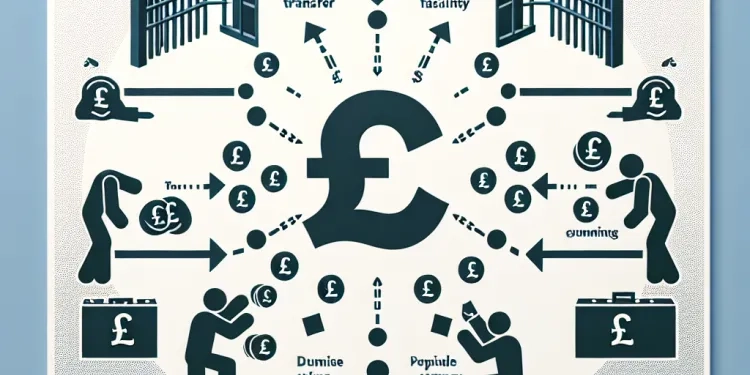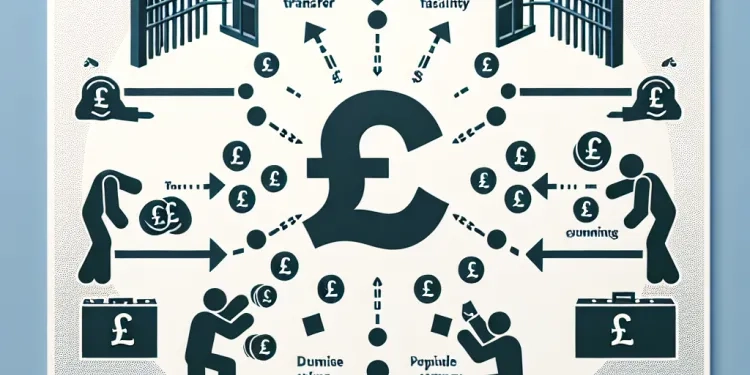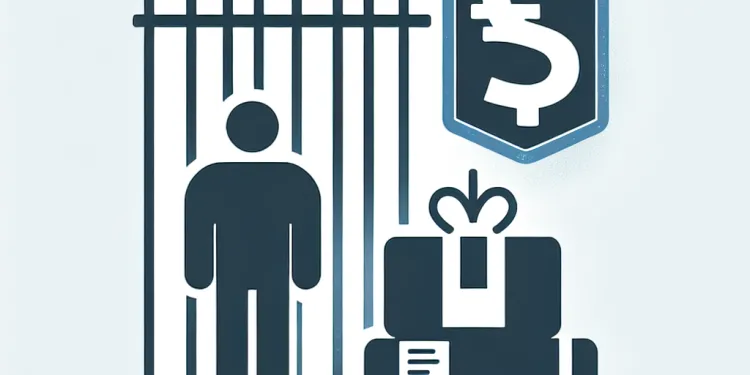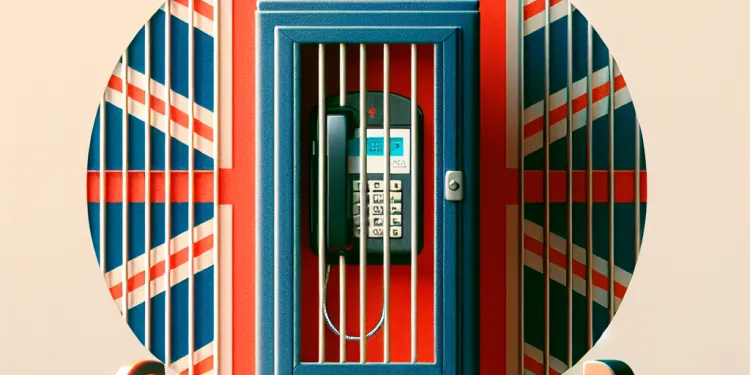
Find Help
More Items From Ergsy search
-

What happens if an inmate is transferred to another facility?
Relevance: 100%
-

Can I send money to an inmate?
Relevance: 53%
-

What are the rules for writing to an inmate?
Relevance: 53%
-

How can I advocate for an inmate's needs?
Relevance: 47%
-

Can inmates receive packages?
Relevance: 47%
-

Can inmates have personal belongings?
Relevance: 43%
-

Can inmates access legal assistance?
Relevance: 40%
-

What is an inmate commissary?
Relevance: 37%
-

Is there a minimum transfer amount required?
Relevance: 29%
-

Is a balance transfer the right choice for me?
Relevance: 29%
-

Can I transfer my ISA between providers?
Relevance: 28%
-

Are there any fees associated with balance transfers?
Relevance: 28%
-

What is a balance transfer credit limit?
Relevance: 28%
-

How does a balance transfer work?
Relevance: 28%
-

What is a Balance Transfer Credit Card?
Relevance: 28%
-

How are embryos transferred during IVF?
Relevance: 28%
-

Will transferring a balance affect my credit score?
Relevance: 28%
-

How do I apply for a balance transfer card?
Relevance: 28%
-

Is there a library service in the prison?
Relevance: 27%
-

How long does a balance transfer take?
Relevance: 27%
-

Can a company refuse to register a share transfer?
Relevance: 27%
-

Can I transfer a balance to a card with no promotional offer?
Relevance: 27%
-

Do balance transfer offers apply to new purchases?
Relevance: 27%
-

How many embryos are usually transferred in IVF?
Relevance: 27%
-

Can I transfer my TV license to a new address?
Relevance: 27%
-

What are the benefits of a balance transfer credit card?
Relevance: 27%
-

Can I transfer balances from any credit card?
Relevance: 26%
-

How do I find out where they are incarcerated?
Relevance: 26%
-

Can I transfer a balance from a loan to a credit card?
Relevance: 26%
-

Can I use a balance transfer card for new purchases?
Relevance: 26%
-

What is the typical duration of a promotional balance transfer offer?
Relevance: 26%
-

What items can I send to someone in prison?
Relevance: 26%
-

Can I transfer cashback rewards to another credit card?
Relevance: 26%
-

Product Transfer Rate Switch vs Remortgage What's Best
Relevance: 25%
-

How can I contact someone in prison?
Relevance: 25%
-

Will I be in a shared or single cell?
Relevance: 24%
-

What is a good credit score to qualify for a balance transfer card?
Relevance: 24%
-

What are women's prisons like in the UK?
Relevance: 23%
-

Are phone calls from prison free?
Relevance: 22%
-

What are potentially exempt transfers (PETs)?
Relevance: 20%
Reasons for Transfer
An inmate in the UK prison system may be transferred to another facility for various reasons. Transfers can occur due to overcrowding, security classification changes, or to facilitate access to specific programs or healthcare services. Sometimes inmates are moved closer to their family or legal representatives to maintain contact and prepare for future court appearances. The decision to transfer can be initiated by the prison service or requested by the inmate, but it depends on availability and suitability of spaces in other facilities.
The Transfer Process
Once a transfer is deemed necessary or beneficial, the process involves several steps. First, assessments are conducted regarding the inmate’s security level, health needs, and any ongoing engagements in educational or rehabilitative programs. A suitable facility is then identified, and arrangements are made for transport, which is typically handled by a private company contracted by Her Majesty's Prison and Probation Service (HMPPS). The inmate is informed of the transfer details, including the destination, as well as any relevant rules and procedures of the new facility.
Impact on Inmates
Inmate transfers can significantly affect the individuals involved. On one hand, a transfer might offer improved conditions, better access to healthcare, or greater opportunities for rehabilitation. For instance, some prisons have specialized programs or facilities that address particular needs, such as those focused on substance misuse or mental health. On the other hand, being moved can also disrupt established routines, relationships with fellow inmates, and access to support networks. Additionally, it can have a psychological impact, contributing to stress and anxiety due to unfamiliarity and adjustments required in a new environment.
Family and Legal Considerations
Transfers can also impact an inmate’s family and legal arrangements. Families may face challenges visiting if the new facility is further away. Regular visits are vital for maintaining family ties, which play a crucial role in the rehabilitation process. Legal considerations involve ensuring that ongoing legal processes are not hindered; hence, legal representatives should be informed promptly about the transfer. Facilities typically facilitate communication to ensure legal rights and proceedings continue without interruption.
Rights and Complaints
Inmates have rights during transfers, including being treated with dignity and respect. UK prison regulations require that inmates are informed well in advance of any transfer unless security considerations dictate otherwise. If an inmate believes their transfer was unjust or mishandled, they can file a complaint through the prison's internal processes, and if unsatisfied with the response, escalate it to the Prisons and Probation Ombudsman. Knowing and exercising these rights can help inmates navigate the complexities of the transfer process effectively.
Why Prisoners Move
Sometimes, a prisoner in the UK must move to another prison. This can happen for different reasons. Sometimes prisons are too full. Other times, a prisoner might need to change because they need a different level of security. Some prisoners move so they can join a certain program or get healthcare. Sometimes prisoners move closer to their families or lawyers. This helps them stay in contact and get ready for future court dates. The prison can decide to move a prisoner, or prisoners can ask to move. But there must be space in another prison.
How Prison Moves Happen
When a prisoner needs to move, there are steps to follow. First, people check what the prisoner needs. This includes security, health, and any programs they are doing. Then, they find a new prison for the prisoner. Special companies handle transport. They work with the prison service. The prisoner learns where they will go and the rules of the new place.
How Moving Affects Prisoners
Moving can change many things for a prisoner. A new place might be better, with more help or programs. Some prisons have special help for things like staying healthy or avoiding drugs. But moving can also be hard. Prisoners may miss their friends and the routine they know. They might feel stressed or worried in a new place.
Family and Lawyer Changes
When a prisoner moves, this can affect visits from family. If the new place is far, visits can be difficult. Seeing family helps prisoners stay positive. It's important for getting better. Lawyers also need to know when a prisoner moves. This helps to keep any legal actions going. Prisons help share information so everyone knows what's happening.
Prisoners' Rights and Complaints
Prisoners have rights when they move. They should be treated with care and respect. UK rules say prisoners must hear about moves early, unless it is unsafe. If a prisoner thinks their move was wrong, they can complain. They do this through the prison's system. If still unhappy, they can tell the Prisons and Probation Ombudsman. Knowing these rights helps prisoners handle moving in the right way.
Frequently Asked Questions
Why might an inmate be transferred to another facility?
Inmates can be transferred for a variety of reasons including crowding, security classification changes, medical needs, participation in specific programs, or to be closer to family.
Will an inmate's family be notified of a transfer?
Typically, the inmate is responsible for informing family members of a transfer. Facilities generally do not notify families directly.
How long does an inmate transfer usually take?
The length of time for an inmate transfer varies depending on the reasons for the transfer, distance, and availability of transportation.
Does a transfer affect an inmate's release date?
A transfer does not typically affect an inmate's release date unless the transfer is related to a new charge or disciplinary issue.
Can an inmate refuse a transfer?
Inmates generally do not have the option to refuse a transfer as these decisions are made based on administrative needs and security considerations.
How will a transfer affect an inmate's visitation schedule?
A transfer will affect an inmate's visitation schedule as visits will have to be arranged at the new facility according to its specific rules and visiting hours.
What happens to an inmate's personal belongings during a transfer?
Personal belongings are usually inventoried, packed, and transferred with the inmate, although there might be limitations on what can be taken.
Can an inmate's mail follow them to a new facility?
Mail is generally forwarded to an inmate's new location, but there might be delays in receiving it.
How does a transfer impact an inmate's participation in programs?
A transfer can disrupt an inmate's participation in programs, but they may be able to continue similar programs at the new facility if available.
What is the process for an inmate transfer between facilities?
The process usually involves a review of the inmate's records and circumstances, approval from prison administration, notification of the inmate, and coordination of logistics.
Do transfers only occur between similar types of facilities?
Transfers can occur between different types of facilities based on security level, inmate needs, and available space.
How are inmates typically transported between facilities?
Inmates are usually transported by secure vehicles operated by the correctional department, with appropriate security measures in place.
Are inmates informed about their transfer in advance?
Inmates are sometimes informed in advance, but for security reasons, this information could be withheld until shortly before the transfer.
Is it possible for an inmate to be transferred back to their original facility?
It is possible for an inmate to be transferred back, but it depends on the reasons for the original transfer and current administrative considerations.
Can an inmate's attorney be informed of a transfer?
While the facility may not inform attorneys directly, inmates are usually able to contact their attorney with news of their transfer.
Will an inmate's security classification change with a transfer?
A transfer could result from a change in security classification or necessitate a reevaluation of the inmate's classification at the new facility.
What should families do if they cannot locate an inmate after a transfer?
Families should contact the correctional department's inmate locator service or customer service for assistance.
Can visiting hours and rules differ at a new facility?
Yes, visiting hours and rules can differ, so it's important to check with the new facility for their specific schedule and policies.
How does a transfer affect an inmate's commissary account?
An inmate's commissary account is typically transferred along with them, but there may be delays before it is accessible at the new facility.
Does a transfer mean an inmate is in trouble?
Not necessarily; transfers can occur for a variety of administrative or rehabilitative reasons and are not always indicative of disciplinary issues.
Why would a person in prison move to a different prison?
Here are a few reasons:
- Crowding: If too many people are in one prison, some might move to another.
- Safety: To keep everyone safe, someone might be moved.
- Special Needs: Some prisoners need special help, like doctors or classes, only at another prison.
You can use pictures, ask a helper, or talk to someone you trust to understand better.
Prisoners can be moved to a different prison for many reasons. They might be moved because there are too many people in one prison. They could be moved if their security level changes. They might need to be moved for health reasons, to join special programs, or to be nearer to their family.
Will the inmate's family know about a transfer?
When someone in prison moves to a different place, their family might not always get told.
Families can ask the prison about the transfer.
If there are problems with understanding, families can use a helper or a translator.
Usually, the person in prison tells their family if they move to a different prison. The prison doesn't tell the family directly.
How long does it take to move someone in prison?
Moving someone in prison means taking them from one place to another. This can take a different amount of time.
Here are some points to help understand:
- It can be quick or slow. It depends on where they are going.
- Sometimes it takes a few hours.
- Other times, it might take a few days.
- They might stop at different places on the way.
Need help understanding? You can:
- Ask someone to read with you.
- Use apps that read out loud.
- Take it slow and read a little at a time.
How long it takes to move someone in prison can be different for each person. It depends on why they are moving, how far they have to go, and if there is a ride ready for them.
Does moving a prisoner change their release day?
Moving a person from one prison to another usually does not change when they get out. But if they moved because they broke a rule or did something bad, it might change their release date.
Can a person in prison say no to moving?
Prisoners usually cannot say no to being moved. This is because these moves are decided by the prison for safety and other important reasons.
What happens to visits when a prisoner moves to a new prison?
When someone moves to a new prison, visiting times will change. Family and friends need to follow the new prison's rules to visit.
What happens to an inmate's things when they move to a new prison?
When someone in prison has to move to a new prison, their things go with them.
Here is what happens:
- Prison workers put the inmate's things in a safe bag or box.
- The bag or box is sent to the new prison with the inmate.
- When the inmate gets to the new prison, they can have their things back.
It is important that the inmate knows what they can take with them.
Support tools can help, like:
- Asking a friend or family member for help.
- Using pictures or lists to understand better.
When a person moves to a new place, their things get counted and packed up. Most of their stuff moves with them, but there are some things they might not be allowed to take.
Can a prisoner's mail go with them if they move to a new prison?
If a prisoner moves to a different prison, can their mail move with them too?
Here's how it works:
- The old prison can send the mail to the new prison.
- The mail might take some time to arrive.
- Friends and family should find out the new address.
- It's good to write the new address on letters.
To make it easier:
- Tell friends and family about any moves.
- Keep track of the new prison address.
- Ask for help if you're not sure where your prisoner's mail goes.
- Use a calendar to remind you to check for new addresses.
Mail is usually sent to where an inmate moves. But sometimes it can take longer to get there.
What happens to an inmate's programs when they move?
When a person in prison moves to a new place, it can change how they join in programs. Programs are things like classes or activities.
Here’s how it might change:
- They might have to stop a program they were doing.
- They might start a new program in the new place.
- Moving can make it harder to finish a program.
Tools can help, like:
- Lists to keep track of programs.
- Talking to people who can help.
- Games to practice new skills.
It’s good to ask for help if moving is hard.
Moving to a new prison can make it hard for someone to keep doing their programs. But they might be able to join the same kind of programs at the new place if they have them there.
How do you move someone from one prison to another?
Here is how it works:
- First, staff plan the move.
- Then, they check if the person is okay to move.
- Next, they tell the person about the move.
- Finally, they take the person to the new place.
For help, you can:
- Ask someone to explain it to you.
- Use pictures to make it clearer.
- Break each step into small pieces.
The process usually means looking at the prisoner's files and situation, getting approval from the people in charge at the prison, telling the prisoner about it, and organizing the details of the transfer.
To help you understand better, you can try using pictures to show each step or ask someone to explain it to you slowly.
Do moves only happen between places that are the same?
This question asks if people or things can only be moved from one place to another when both places are similar.
Helpful Tip: You can use pictures or symbols to better understand different types of places.
Sometimes people move from one place to another. This can happen for different reasons. They might need more help, there might be a space for them, or because of safety rules.
How do prisoners usually get moved from one place to another?
Prisoners are sometimes moved to different jails or prisons.
Here is how they might travel:
- Prison buses: Big buses that can hold a lot of people.
- Cars or vans: Smaller vehicles for fewer people.
- Airplanes: Sometimes used for faraway places.
There are special guards who make sure everyone stays safe during the trip.
If you want help understanding, you can:
- Ask a family member or friend.
- Use pictures to help explain the words.
- Listen to someone read the information out loud.
People in jail are moved in safe cars that are run by the prison staff. They make sure it is safe when moving people.
Do prisoners know before they are moved?
Sometimes, people in prison are told before they are moved, but for safety reasons, they might not know until just before it happens.
Can a prisoner go back to their old prison?
Yes, a person in prison can move back to where they were before. This happens only if the reasons for their first move are okay now.
Can a prisoner's lawyer know about a move?
Inmates are people in prison. Sometimes, they are moved to different prisons. A lawyer helps people understand the law. A prisoner's lawyer can be told if the prisoner is moving. This is so the lawyer can still help.
Here are some ways to stay informed:
- Ask the prison staff for a contact number.
- Keep a list of important phone numbers.
- Write down important dates and changes.
This way, the lawyer can know where the prisoner is and can help them better.
When a person in jail moves to a new place, the jail might not tell the lawyer. But the person in jail can usually call or write to their lawyer to let them know they have moved.
Does an inmate's security level change if they move to a new prison?
A move to a different prison can happen if rules about safety change. It might also mean that prison staff need to look again at the inmate's safety level in the new place.
What can families do if they can't find their loved one after a prison move?
If someone you care about is moved to a different prison, and you can't find them:
1. **Contact the prison**: Call the last prison where they were. Ask where your loved one is now.
2. **Check the online system**: Some places have a website to help find people in prison. You can search for your loved one there.
3. **Ask for help**: Talk to someone who can help, like a lawyer. They might know what to do.
4. **Use support services**: Some groups can help families find loved ones in prison. Look for these support services.
It's important to stay calm and keep trying different ways to find your loved one.
Families should call the prison's help service or check their online tool to find where someone is in prison.
Do visiting times and rules change at a new place?
Yes, visiting times and rules can be different at each place.
If you are not sure, ask someone who works there.
You can also call them or check their website for information.
Visiting times can be different in each place. It's a good idea to ask the new place about their visiting times and rules.
What happens to a prisoner's money when they move to a different prison?
When someone in prison moves to a new place, their money moves with them too. But, it might take some time before they can use it at the new place.
Is moving a prisoner a bad sign?
Moving a prisoner to a new place does not always mean they are in trouble. There can be many reasons for a move. Sometimes it is because of space or safety.
If you want to know why someone was moved, you can ask the prison staff or talk to a lawyer. They can help explain the situation.
Transfers don't always mean trouble. People might move for different reasons, like paperwork or getting better. It's not always because they did something wrong.
Useful Links
- Ergsy carfully checks the information in the videos we provide here.
- Videos shown by Youtube after a video has completed, have NOT been reviewed by ERGSY.
- To view, click the arrow in centre of video.
- Most of the videos you find here will have subtitles and/or closed captions available.
- You may need to turn these on, and choose your preferred language.
- Go to the video you'd like to watch.
- If closed captions (CC) are available, settings will be visible on the bottom right of the video player.
- To turn on Captions, click settings .
- To turn off Captions, click settings again.
More Items From Ergsy search
-

What happens if an inmate is transferred to another facility?
Relevance: 100%
-

Can I send money to an inmate?
Relevance: 53%
-

What are the rules for writing to an inmate?
Relevance: 53%
-

How can I advocate for an inmate's needs?
Relevance: 47%
-

Can inmates receive packages?
Relevance: 47%
-

Can inmates have personal belongings?
Relevance: 43%
-

Can inmates access legal assistance?
Relevance: 40%
-

What is an inmate commissary?
Relevance: 37%
-

Is there a minimum transfer amount required?
Relevance: 29%
-

Is a balance transfer the right choice for me?
Relevance: 29%
-

Can I transfer my ISA between providers?
Relevance: 28%
-

Are there any fees associated with balance transfers?
Relevance: 28%
-

What is a balance transfer credit limit?
Relevance: 28%
-

How does a balance transfer work?
Relevance: 28%
-

What is a Balance Transfer Credit Card?
Relevance: 28%
-

How are embryos transferred during IVF?
Relevance: 28%
-

Will transferring a balance affect my credit score?
Relevance: 28%
-

How do I apply for a balance transfer card?
Relevance: 28%
-

Is there a library service in the prison?
Relevance: 27%
-

How long does a balance transfer take?
Relevance: 27%
-

Can a company refuse to register a share transfer?
Relevance: 27%
-

Can I transfer a balance to a card with no promotional offer?
Relevance: 27%
-

Do balance transfer offers apply to new purchases?
Relevance: 27%
-

How many embryos are usually transferred in IVF?
Relevance: 27%
-

Can I transfer my TV license to a new address?
Relevance: 27%
-

What are the benefits of a balance transfer credit card?
Relevance: 27%
-

Can I transfer balances from any credit card?
Relevance: 26%
-

How do I find out where they are incarcerated?
Relevance: 26%
-

Can I transfer a balance from a loan to a credit card?
Relevance: 26%
-

Can I use a balance transfer card for new purchases?
Relevance: 26%
-

What is the typical duration of a promotional balance transfer offer?
Relevance: 26%
-

What items can I send to someone in prison?
Relevance: 26%
-

Can I transfer cashback rewards to another credit card?
Relevance: 26%
-

Product Transfer Rate Switch vs Remortgage What's Best
Relevance: 25%
-

How can I contact someone in prison?
Relevance: 25%
-

Will I be in a shared or single cell?
Relevance: 24%
-

What is a good credit score to qualify for a balance transfer card?
Relevance: 24%
-

What are women's prisons like in the UK?
Relevance: 23%
-

Are phone calls from prison free?
Relevance: 22%
-

What are potentially exempt transfers (PETs)?
Relevance: 20%


